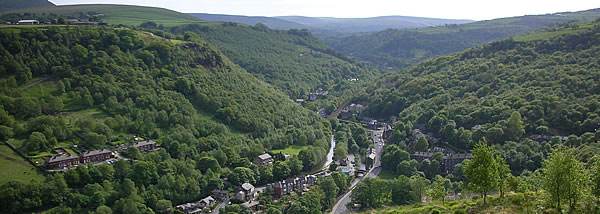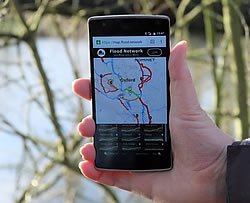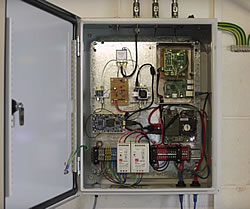Calderdale, a region in the North of England has been affected by severe flooding several times. The last flooding happened end of 2015.
It was decided to see how the Internet of Things could help in setting up a warning system for rising water levels and the Calderdale Flood Sensor Network was born, a relatively easy but very relevant IoT deployment for the greater good of the local community, using LPWA network connectivity.
The Upper Calder Valley is the valley of the river Calder in West Yorkshire. It is part of the metropolitan district of Calderdale and covers several towns which have been severely affected by the flooding.

The Flood Network: a grassroots Internet of Things example
The Upper Calder Valley is also the home of AB Open, an open source and technical communities consultancy, which is specialized in embedded and wireless systems, and is located in Halifax, a town in the Metropolitan Borough of Calderdale.

As many regions in the UK have been subject to severe flooding in recent years, a grassroots network was already built, called the Flood Network, operating out of Oxford, which aims to build the UK’s largest networks of flood sensors and relies on citizens, who can buy a sensor and become a flood watcher, to help doing so.
Initially the Flood Network used wireless technology with a small range, which was not practical of course Later it started using low-power wide-area IoT network technologies LoRa (LoRaWAN) which is designed for these kinds of low-power, long-range, low-battery, outdoor and low-data Industrial Internet of Things applications.
A LoRaWAN flood alert system for Calderdale
That’s when it also became interesting for the people of AB Open to look at a flood sensor network for their plagued region.

AB Open decided to build IoT gateways for Calderdale, using LoRaWAN and open source software. The plan is to grow from a still relatively small operation to a broader platform with the help of the local community whereby people can have a sensor installed if they live by the river (other water levels can also be monitored in such flood watch applications, for instance groundwater levels).
Once the connectivity is there, here with LoRaWAN (and, if available other unlicensed band LPWA networks), all kinds of applications become possible and if you live in a relatively remote area and want to set up an outdoor system such as The Calderale Flood Sensor Network, then LPWA technologies in the unlicensed band are obviously great and cost-effective choices.
A great Internet of Things application with a sense of community, in the end what connectivity is about too. After all, it is an Internet of Everything and everyone. More in the video on YouTube.
More Internet of Things examples and casesTop picture Calder river and valley: By Scott L. Cockroft – Own work taken with a Canon Ixus 700, Public Domain on Wikipedia Link

